When gophers invade your yard, they can quickly transform a beautiful landscape into a pockmarked wasteland of mounds and tunnels. While various control methods exist, poison is often considered one of the most effective options for severe infestations. This guide examines the best gopher poison products on the market, explains how they work, and provides essential safety information to help you reclaim your yard responsibly. In addition to using poison, it’s also worthwhile to consider planting certain species that deter these burrowing pests. Research shows that there are specific plants gophers dislike for gardens, such as lavenders and daffodils, which can serve as a natural barrier to protect your prized flowers and vegetables. By combining these preventative measures with targeted poisoning strategies, you can create a more comprehensive approach to managing gopher populations effectively. However, it’s important to note that not all products are suitable for every situation, and understanding the differences between various rodent species can significantly impact your control efforts. In a gopher and groundhog comparison, for example, gophers typically create more extensive tunnel systems and are often more destructive in gardens, necessitating a targeted approach. By familiarizing yourself with these distinctions, you’ll be better equipped to choose the most effective poison and implement a strategy that not only eliminates the issue but also protects your landscape’s health.
Quick Picks: Best Gopher Poisons
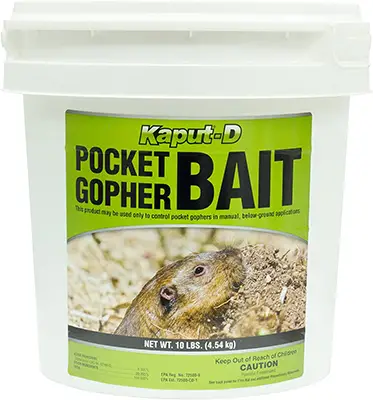
Editor’s Choice
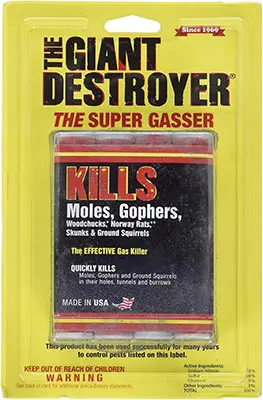
People’s Choice

Fast Acting
Gopher poisons contain toxic chemicals that can harm pets, wildlife, and humans if not handled properly. Always wear protective gear when applying poison, keep all products away from children and pets, and follow manufacturer instructions precisely. Consider alternative control methods first, and use poisons only when necessary and in accordance with local regulations.
Understanding Different Types of Gopher Poison
Different active ingredients in gopher poisons work through various mechanisms. Understanding how each type functions can help you choose the most appropriate product for your situation while minimizing risks to non-target animals. It’s important to consider the specific behavior and biology of gophers when selecting a poison, as their burrowing habits can influence the effectiveness of different treatments. Additionally, understanding gopher and mole differences explained can further aid in identifying the most effective control methods, as these two pests exhibit distinct behaviors that may require tailored approaches. Utilizing the correct method not only enhances the likelihood of successful eradication but also ensures that the environmental impact is minimized.
| Poison Type | How It Works | Effectiveness | Safety Concerns |
|---|---|---|---|
| Strychnine | Causes severe muscle cramps that lead to respiratory failure | Very high – kills within 15 minutes to 2 hours | High risk of secondary poisoning to predators; highly toxic to all animals and humans |
| Zinc Phosphide | Reacts with stomach acids to produce phosphine gas that damages internal organs | High – typically kills within 24-48 hours | Lower risk of secondary poisoning; still highly toxic to all mammals |
| Anticoagulants (Diphacinone) |
Prevents blood clotting, causing internal hemorrhaging | Moderate – takes 3-7 days to be lethal | Significant risk of secondary poisoning; vitamin K1 antidote available |
| Gas Cartridges (Sulfur, Carbon) |
Produces toxic gases that cause asphyxiation | Moderate to High – dependent on tunnel system integrity | Low risk of secondary poisoning; fire hazard and inhalation risk to humans |
The most fast-acting poisons (like strychnine) often present the highest risk to non-target animals. When choosing a gopher poison, consider whether you need immediate results or if a slower-acting but potentially safer option might be more appropriate for your situation, especially if you have pets or wildlife in your area.
Top 5 Best Gopher Poison Products Compared
| Product | Active Ingredient | Best For | Key Benefits | Drawbacks |
|---|---|---|---|---|
| Kaput Pocket Gopher Bait | Diphacinone (anticoagulant) | Large properties with extensive infestations |
|
|
| The Giant Destroyer | Sodium nitrate, sulfur, charcoal (gas producer) | Isolated tunnels away from structures |
|
|
| Bonide Moletox Gopher Killer | Zinc phosphide | Gardens and residential areas |
|
|
| Victor Poison Peanuts | Zinc phosphide | Targeted application in active tunnels |
|
|
| JT Eaton Bait Block | Diphacinone | Homes with pets (when used in bait stations) |
|
|
Kaput Pocket Gopher Bait
Editor's ChoiceHow Does It Work
How to Use
- Locate fresh gopher mounds and use a probe to find the main tunnel (usually 8-12 inches away from the plug side of the mound)
- Create an opening and place approximately 1-2 tablespoons of bait in each direction of the main tunnel
- Cover the opening with sod or a small rock to keep light out while allowing gopher access
- Check treated areas every 3-4 days and reapply as needed
- Ready to use with no mixing required
- Effective for treatment of large areas
- Antidote (Vitamin K1) available if accidentally ingested by pets
- Works on all gopher species
- Treats multiple areas with one container
- Takes up to a week to show results
- Requires diligent application to all active tunnels
- Can pose secondary poisoning risk to predators
The Giant Destroyer
People's ChoiceHow Does It Work
How to Use
- Locate all tunnel openings and plug all but one with soil
- Light the fuse end of the cartridge according to package directions
- Insert the lit cartridge into the open tunnel and immediately seal the opening
- Keep pets and children away from the area during treatment
- Wait at least 24 hours before checking results
- Fast-acting with results often visible within 24 hours
- No risk of secondary poisoning to predators
- Biodegradable and doesn't contaminate soil long-term
- No digging required to access main tunnels
- Effective even in complex tunnel systems
- Can pose fire hazard if used improperly
- Less effective in very porous or sandy soils
- Requires caution during application to avoid inhalation
Bonide Revenge Moletox Gopher Killer
Fast ActingHow Does It Work
How to Use
- Probe to locate the main tunnel approximately 8-12 inches from a fresh mound
- Use approximately one teaspoon of bait per active burrow or tunnel
- Place bait directly into the main tunnel, not the lateral tunnels
- Close the opening with soil, being careful not to cover the bait
- For protecting bulbs during planting, place several granules around each bulb
- Fast-acting formula usually works within 24-48 hours
- Ready to use with no mixing required
- Lower risk of secondary poisoning than anticoagulants
- Economical treatment option
- Can be used preventatively around flower bulbs
- No built-in applicator in the package
- Highly toxic if accidentally ingested by non-target animals
- Less effective in wet conditions
Victor Poison Peanuts
Easy ApplicationHow Does It Work
How to Use
- Use the pointed container tip to locate and puncture a hole into an active tunnel
- Squeeze the container to dispense approximately one teaspoon of bait directly into the tunnel
- Cover the hole with a sod plug or small rock
- Apply to multiple tunnels for complete control
- Recheck treated areas after 2-3 days
- Specialized applicator container makes application precise
- Sweet smell is highly attractive to gophers
- Fast-acting formula works in 1-2 days
- Minimal soil disturbance during application
- Lower secondary poisoning risk than anticoagulants
- Less suitable for large-scale infestations
- More labor-intensive than some other methods
- Container may clog with repeated use
JT Eaton Bait Block
Pet-Friendly OptionHow Does It Work
How to Use
- Place bait blocks in tamper-resistant bait stations near gopher activity
- For direct tunnel application, cut blocks into smaller pieces before placement
- Position bait stations along gopher travel routes or near burrow entrances
- Inspect and replenish bait stations every 3-4 days
- Continue treatment until all gopher activity ceases
- Peanut butter flavor is highly attractive to gophers
- Weather-resistant blocks work well in damp conditions
- Vitamin K1 antidote available if accidentally ingested by pets
- Each block is individually portioned for easy use
- 144 blocks per container offers excellent value
- Not designed for direct placement in main tunnels
- Slower acting than zinc phosphide products
- Higher potential for secondary poisoning of predators
Step-by-Step Guide to Applying Gopher Poison Effectively
Step 1: Identify Active Tunnels
Locate fresh gopher mounds, which appear as fan or crescent-shaped soil piles. Fresh mounds have loose, moist soil and no vegetation growing through them. To confirm tunnel activity, flatten several mounds and check back in 24-48 hours – rebuilt mounds indicate active tunnels that should be targeted for treatment.
Step 2: Prepare Safely
Before handling any poison, put on protective gloves, long sleeves, and safety glasses. Keep children and pets away from the treatment area. Read all product instructions thoroughly. Prepare your application tools, such as a probe for locating tunnels, a trowel for creating access, and proper measuring devices for the poison.
Step 3: Access the Main Tunnel
Using a gopher probe (a metal rod with a handle), probe approximately 8-12 inches away from the plug side of a fresh mound. When the probe suddenly drops about 2 inches, you’ve located the main tunnel. Carefully enlarge this hole with a trowel or garden tool to create access for bait placement without collapsing the tunnel.
Step 4: Apply the Poison
Following product instructions precisely, place the recommended amount of poison in the main tunnel (not the lateral tunnels that lead to mounds). For most baits, place 1-2 tablespoons in each direction of the main tunnel. For gas products, follow ignition and placement instructions carefully. Never overapply poison – more is not better and increases environmental risks.
Step 5: Seal the Opening
After placing the bait, cover the access hole with a small rock, piece of sod, or soil clod to keep light out but avoid packing soil into the tunnel, which could block gopher movement or separate them from the bait. For gas products, seal all visible openings tightly to prevent gas escape.
Step 6: Monitor and Maintain
Check treated areas every 2-3 days for signs of continued activity. Mark treated mounds with small flags to track them. Reapply bait to tunnels that remain active after 5-7 days. Continue monitoring for 2-3 weeks, as complete control of an infestation often requires multiple treatments as gophers from adjacent areas may move in.
Never leave poison accessible to children, pets, or wildlife. Always store unused product in its original container, out of reach of children and pets. Dispose of dead gophers and unused bait according to local regulations. If a pet or person accidentally ingests poison, contact Poison Control (1-800-222-1222) or a veterinarian immediately.
Preventing Secondary Poisoning and Environmental Impact
One of the most significant concerns with using poison for gopher control is the risk of secondary poisoning, where predators or scavengers become poisoned after consuming a poisoned gopher. Here are strategies to minimize these risks:
| Risk Factor | Mitigation Strategy | Implementation Tips |
|---|---|---|
| Secondary Poisoning | Select products with lower secondary poisoning risk |
|
| Pet Exposure | Keep pets away from treatment areas |
|
| Wildlife Impact | Minimize exposure to non-target species |
|
| Water Contamination | Prevent runoff into water sources |
|
Rather than relying solely on poison, consider an integrated approach that combines multiple control methods. Start with exclusion techniques like underground fences in high-value areas, employ traps in moderate infestations, and use habitat modification to make your property less appealing to gophers. Reserve poison use for severe cases when other methods have proven insufficient.
Alternatives to Poison for Gopher Control
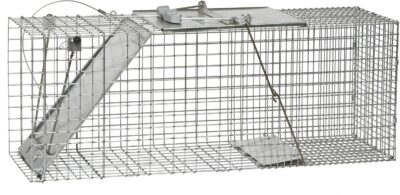
Trapping
- No toxins or chemicals involved
- Confirm successful removal
- Reusable equipment
- Effective for smaller infestations
- Both lethal and live options available

Exclusion
- Hardware cloth barriers
- Underground fencing (24+ inches deep)
- Wire baskets for protecting plants
- Raised beds with wire bottoms
- Long-term protection solution
 Natural Deterrents
Natural Deterrents
- Castor oil-based repellents
- Plants gophers avoid (e.g., euphorbia, marigolds)
- Predator urine products
- Sonic/vibration devices
- Safe for wildlife and pets
Frequently Asked Questions
How long does it take for gopher poison to work?
The time it takes for poison to kill gophers varies significantly depending on the active ingredient. Gas cartridges work almost immediately (within minutes) if properly deployed. Zinc phosphide typically kills within 24-48 hours after ingestion. Anticoagulant baits like diphacinone work more slowly, taking 5-7 days to reach lethal effect as they require multiple feedings. Factors like the gopher’s size, age, and overall health can also influence the timeframe.
How can I tell if the poison is working?
The most reliable indicator that poison is working is a cessation of new mound formation. After successful poisoning, you won’t see fresh mounds appearing in treated areas. Mark existing mounds and check daily for 1-2 weeks. Additionally, you might notice that plugged tunnel openings remain undisturbed. Complete elimination can take 2-3 weeks, as new gophers may move into vacant tunnels from adjacent areas.
What should I do if my pet ingests gopher poison?
If you suspect or witness your pet ingesting gopher poison, treat it as a life-threatening emergency. Call your veterinarian or an emergency animal hospital immediately. For anticoagulant poisons, vitamin K1 is the antidote, but treatment must begin quickly. Bring the poison package with you if possible, as different poisons require different treatments. Never induce vomiting unless directed by a veterinarian, as this can sometimes cause more harm.
Is it legal to use gopher poison in my area?
Regulations regarding rodenticides vary widely by location. Some states and municipalities have restricted or banned certain active ingredients, particularly strychnine and some anticoagulants, due to environmental concerns and risks to wildlife. Before purchasing or using any gopher poison, check with your local agricultural extension office or department of agriculture about current regulations in your area.
Will gopher poison harm my garden plants or soil?
Most gopher poisons have minimal direct impact on plants or soil when used as directed. Zinc phosphide breaks down relatively quickly in moist soil, while anticoagulants can persist longer but typically at very low concentrations that don’t affect plant growth. The greatest risk to gardens comes from improper application, such as spilling bait on the surface where it can contact edible plants. Always follow label directions regarding application near food crops.
Conclusion
When facing a persistent gopher problem, poison can be an effective solution, but it must be used responsibly with a clear understanding of the risks involved. By selecting the appropriate product for your situation, following application instructions precisely, and taking steps to minimize risks to non-target wildlife and pets, you can effectively control gophers while being a responsible steward of your environment.
The most effective gopher control strategies often combine multiple approaches, with poison reserved for serious infestations. When using poison, choose products with the lowest risk profile suitable for your situation, apply them directly to active tunnels, and maintain vigilant monitoring. Always prioritize safety by keeping poison inaccessible to children, pets, and wildlife, and be prepared to repeat treatments as needed for complete control.
Before reaching for poison, consider whether trapping or exclusion methods might provide sufficient control with fewer environmental risks. For ongoing prevention, habitat modification and vigilant monitoring can help keep gophers from re-establishing on your property after successful elimination.

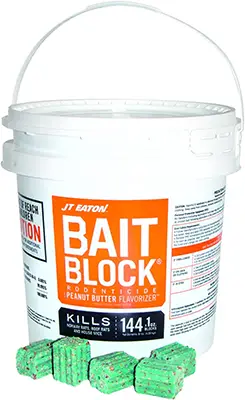
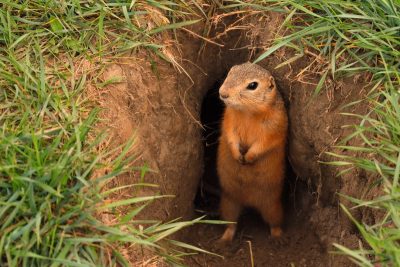
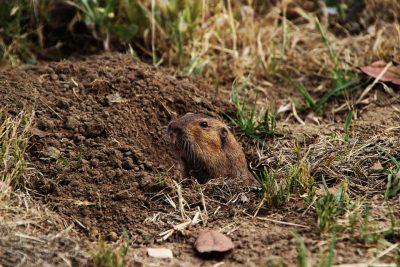
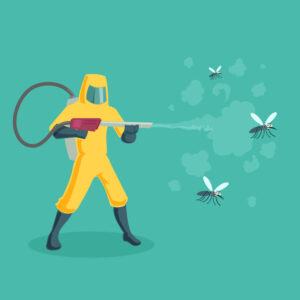

why do you have pictures of prairie dogs in a gopher control article?